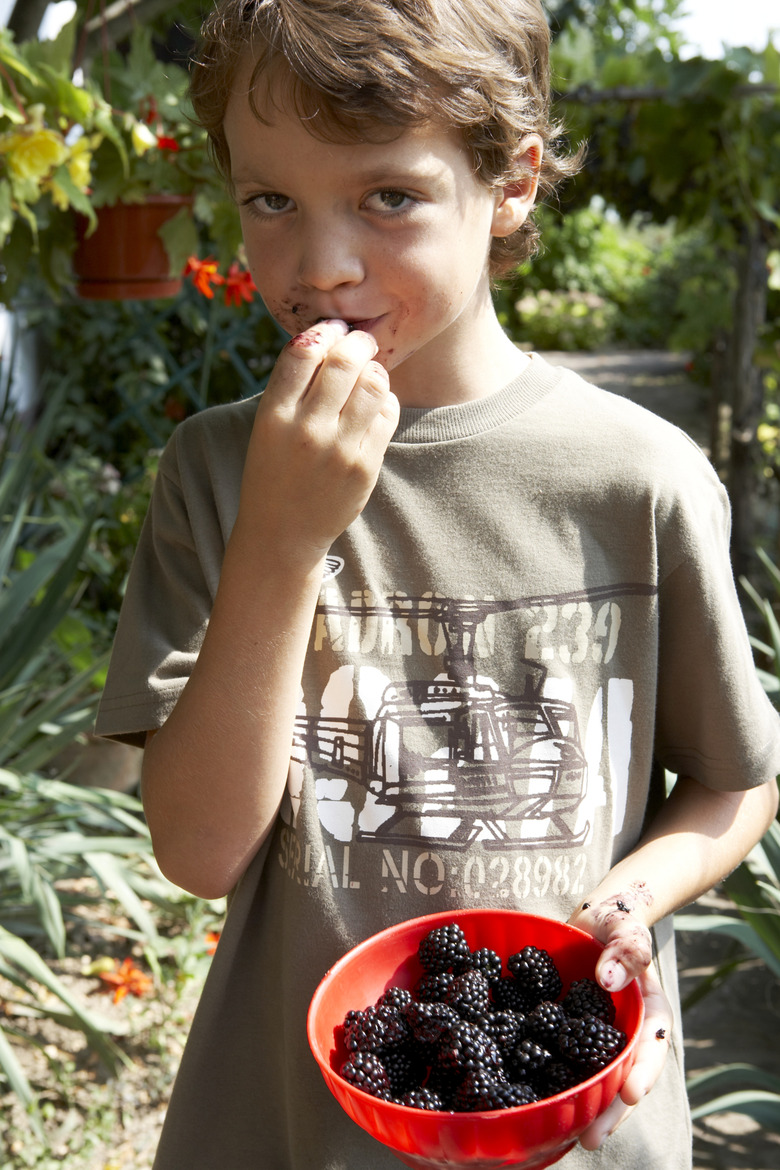Trees That Produce Black Berries
True blackberries are members of the Rubus biological genus and the Rosaceae, or rose, family. Blackberries we eat are clusters of tiny fruit, known as "drupelets" that grow on a vine or a tall shrub, rather than single berries. Additionally, the fruit on blackberry shrubs, and on trees that bear black berries, is usually dark purple, not black. Use caution when gathering black berries to eat, if the black berry came from a tree, it may or not be edible.
Step 1
The black mulberry tree (Morus nigra) often suffers from a case of mistaken identity. When people see the fruit they will often call it a "blackberry tree." The black mulberry can grow as tall as 30 feet or be trained to grow as a bush, and can produce blackberry-like fruit for centuries. The berries on the black mulberry have a sweet and tart taste that's somewhat similar to grapefruit. The black mulberry is hardy to U.S. Department of Agriculture plant hardiness zone 7 and higher, preferring a mild climate and low humidity. It is often found growing on the Pacific Coast of the United States.
Jaboticaba
Step 1
Those who live in South Florida may be familiar with the black berries that grow on the Jaboticaba tree. It is a member of the Hymenaea family of trees and its common name is Jatoba. The tree is a native of the tropical Americas and widely found in Brazil. While the Jatoba only reaches heights of around 15 feet in Florida, it commonly reaches 30 feet and higher in South America. From December to July, the Jatoba blossoms with fragrant white flowers and black berries, which can be picked and eaten fresh from the tree, and used to make juice, jellies, jams and wine.
Step 2
- The black mulberry tree (Morus nigra) often suffers from a case of mistaken identity.
- The black mulberry can grow as tall as 30 feet or be trained to grow as a bush, and can produce blackberry-like fruit for centuries.
Sparkleberry
Step 1
The Sparkleberry tree (Vaccinium arboretum) is hardy from USDA zones 7 to 9, from the coast of Virginia to the Midwest, south to Florida and throughout states in the Gulf Coast region and eastern Texas. It is a true deciduous tree and can grow to a height of about 20 feet. In the springtime it bears fragrant white flowers. It produces small, shiny, deep purple-black berries that are only about 1/4 inch in diameter. The berries are not edible for humans, but birds and butterflies find the berry seeds and nectar quite tasty.
